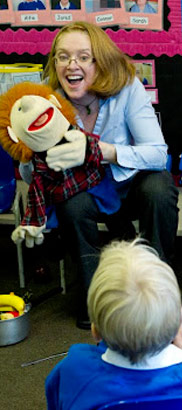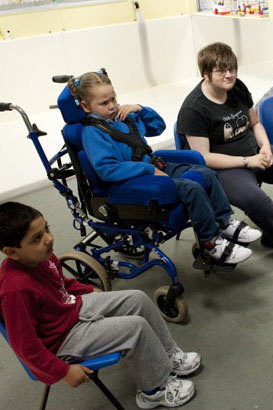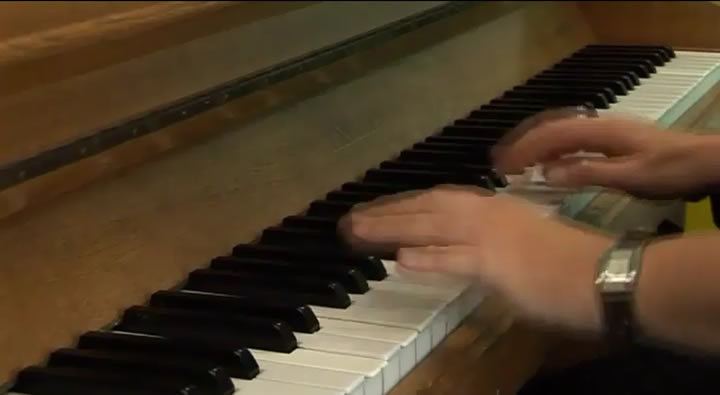
Nicola Grove argues that the art of narrative is a powerful and central part of our understanding of ourselves as social
beings. But the art of narrative, the ability to tell stories, is not automatically given, it has to be learned. For those
with severe learning difficulties, this can be a long and slow process.
Nonetheless, it’s an essential process, one that is underrated in a world of the written word, and one that teachers
of children with learning difficulties must address.
Conventionally developing children start to listen to stories from a very young age, and begin to tell their own stories
soon after they learn to talk. These skills are continually refined as the child grows up, particularly as they learn to
write.
Storytellers gain status from their skills, and rightly so. Even in non-literate societies (or perhaps, especially in non-literate
societies), the story carries enormous importance. Learning how to tell them is an essential way of learning about life.

A story has a beginning, a middle and an end. It has purpose and meaning to both the teller and the listener: it teaches
us to listen carefully; it teaches us about structure, and about the natural rhythms and flow of language; it teaches us
about emotions (fear, excitement, anxiety, heartbreak, happiness, love, for example) in a safe and secure setting, not only
other people's (the characters in the story line), but, most importantly, our own.
What does a story mean to those with learning difficulties? Children with learning difficulties also start listening to
stories from a very young age. They possibly continue to listen throughout their lives, but when do they get to tell stories
themselves?

Most often, the severe communication difficulties experienced by children with SLD/PMLD/CLDD
preclude the art of storytelling, and therefore preclude them from an essential part of becoming a social human being.
If we are to attempt to develop storytelling skills in children with SLD,
the emphasis needs to be on simple, dramatic stories, initially told by the teacher. Over time, children are encouraged to
take in not only the structure and essential elements of a particular story, but also the structure and essential elements
of storytelling itself.
They can then move on to the most important part – telling their own stories, about their own lives.
You may tell these stories as a raconteur would, or you may act them out. Watch the video where a group of children are told the classic story of Jack and the Beanstalk.
Note how music is used to identify different characters and moods.

Grove, N. (2005) Ways into Literature: Stories, Plays and Poems for Pupils with SEN, London: David Fulton.
Grove, N. (2010) The Big Book of Storysharing, London: Senjit.
Grove, N. (ed) (2012) Bringing Literature to Life: Introducing a Range of Approaches for Teachers of Children with Special
Educational Needs, London: Routledge.
